Exosomal long noncoding RNA LNMAT2 promotes lymphatic metastasis in bladder cancer
- PMID: 31593555
- PMCID: PMC6934220
- DOI: 10.1172/JCI130892
Exosomal long noncoding RNA LNMAT2 promotes lymphatic metastasis in bladder cancer
Abstract
Patients with bladder cancer (BCa) with clinical lymph node (LN) metastasis have an extremely poor prognosis. VEGF-C has been demonstrated to play vital roles in LN metastasis in BCa. However, approximately 20% of BCa with LN metastasis exhibits low VEGF-C expression, suggesting a VEGF-C-independent mechanism for LN metastasis of BCa. Herein, we demonstrate that BCa cell-secreted exosome-mediated lymphangiogenesis promoted LN metastasis in BCa in a VEGF-C-independent manner. We identified an exosomal long noncoding RNA (lncRNA), termed lymph node metastasis-associated transcript 2 (LNMAT2), that stimulated human lymphatic endothelial cell (HLEC) tube formation and migration in vitro and enhanced tumor lymphangiogenesis and LN metastasis in vivo. Mechanistically, LNMAT2 was loaded to BCa cell-secreted exosomes by directly interacting with heterogeneous nuclear ribonucleoprotein A2B1 (hnRNPA2B1). Subsequently, exosomal LNMAT2 was internalized by HLECs and epigenetically upregulated prospero homeobox 1 (PROX1) expression by recruitment of hnRNPA2B1 and increasing the H3K4 trimethylation level in the PROX1 promoter, ultimately resulting in lymphangiogenesis and lymphatic metastasis. Therefore, our findings highlight a VEGF-C-independent mechanism of exosomal lncRNA-mediated LN metastasis and identify LNMAT2 as a therapeutic target for LN metastasis in BCa.
Keywords: Lymph; Noncoding RNAs; Oncology; Urology.
Conflict of interest statement
Figures



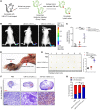
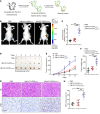
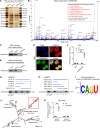


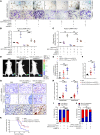
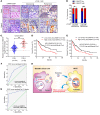
Similar articles
-
Tumor-derived exosomal BCYRN1 activates WNT5A/VEGF-C/VEGFR3 feedforward loop to drive lymphatic metastasis of bladder cancer.Clin Transl Med. 2021 Jul;11(7):e497. doi: 10.1002/ctm2.497. Clin Transl Med. 2021. PMID: 34323412 Free PMC article.
-
SUMOylation promotes extracellular vesicle-mediated transmission of lncRNA ELNAT1 and lymph node metastasis in bladder cancer.J Clin Invest. 2021 Apr 15;131(8):e146431. doi: 10.1172/JCI146431. J Clin Invest. 2021. PMID: 33661764 Free PMC article.
-
Long noncoding RNA BLACAT2 promotes bladder cancer-associated lymphangiogenesis and lymphatic metastasis.J Clin Invest. 2018 Feb 1;128(2):861-875. doi: 10.1172/JCI96218. Epub 2018 Jan 22. J Clin Invest. 2018. PMID: 29355840 Free PMC article.
-
Bladder cancer: non-coding RNAs and exosomal non-coding RNAs.Funct Integr Genomics. 2024 Aug 31;24(5):147. doi: 10.1007/s10142-024-01433-9. Funct Integr Genomics. 2024. PMID: 39217254 Review.
-
Multiple Roles of Exosomal Long Noncoding RNAs in Cancers.Biomed Res Int. 2019 Jul 7;2019:1460572. doi: 10.1155/2019/1460572. eCollection 2019. Biomed Res Int. 2019. PMID: 31360701 Free PMC article. Review.
Cited by
-
Exosome biogenesis: machinery, regulation, and therapeutic implications in cancer.Mol Cancer. 2022 Nov 1;21(1):207. doi: 10.1186/s12943-022-01671-0. Mol Cancer. 2022. PMID: 36320056 Free PMC article. Review.
-
An angiogenesis‑related lncRNA signature for the prognostic prediction of patients with bladder cancer and LINC02321 promotes bladder cancer progression via the VEGFA signaling pathway.Mol Med Rep. 2023 Feb;27(2):38. doi: 10.3892/mmr.2022.12925. Epub 2022 Dec 29. Mol Med Rep. 2023. PMID: 36579659 Free PMC article.
-
Loss of exosomal miR-26a-5p contributes to endometrial cancer lymphangiogenesis and lymphatic metastasis.Clin Transl Med. 2022 May;12(5):e846. doi: 10.1002/ctm2.846. Clin Transl Med. 2022. PMID: 35538902 Free PMC article. No abstract available.
-
Development and Validation of Ferroptosis-Related LncRNA Biomarker in Bladder Carcinoma.Front Cell Dev Biol. 2022 Mar 2;10:809747. doi: 10.3389/fcell.2022.809747. eCollection 2022. Front Cell Dev Biol. 2022. PMID: 35309945 Free PMC article.
-
Exosomal RNAs: Novel Potential Biomarkers for Diseases-A Review.Int J Mol Sci. 2022 Feb 23;23(5):2461. doi: 10.3390/ijms23052461. Int J Mol Sci. 2022. PMID: 35269604 Free PMC article. Review.
References
Publication types
MeSH terms
Substances
LinkOut - more resources
Full Text Sources
Other Literature Sources
Medical
Research Materials
Miscellaneous

